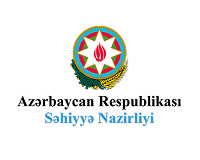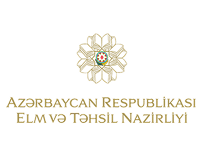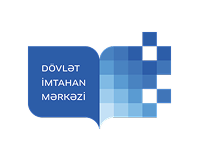“Ana və uşaq sağlamlığı” fənni hər yaş mərhələsində fiziki, əqli və sosial sağlamlıq, rifahın ən yüksək standartlarına nail olmağı öyrənməyi hədəfləyir. Ana və uşaq sisteminin formalaşması və inkişafının nəzəriyyəsi və metodoloji əsaslarını, ana, uşaq, yeniyetmələrin sosial-müdafiəsi, həmçinin sosial sahə müəssisələrində hamilə qadınlar, ana və uşaqlarla sosial iş aparılması sahəsində texnologiyaların öyrənilməsinə xidmət edir. Fənnin tədrisində xarici alimlərin ədəbiyyatlarından və müasir elmi - praktik metodologiyalardan geniş istifadə olunur. Bu biliklər sayəsində gələcəyin ictimai səhiyyə işçiləri demoqrafiq vəziyyətinin yaxşılaşmasına və işçi qüvvəsinin (insan resurslarının) artırılmasına səbəb olmaqla ölkənin sosial-iqtisadi inkişafına xidmət etmiş olacaqlar. Fənnin məqsədi: Səhiyyə müəssisələrində peşəkar sosial işçinin fəaliyyət istiqamətlərindən biri kimi ana və uşaq sağlamlığı sahəsində tələbələrin nəzəri biliklərinin, habelə sosial işin bacarıq və praktiki bacarıqlarının formalaşdırılmasıdır. Eyni zamanda məqsəd səhiyyə sahəsində hamilə qadınlar, analar və uşaqlarla sosial işin təşkili və aparılmasında nəzəri biliklərə və praktiki bacarıqlara malik gələcək peşəkar sosial işçilərin hazırlanmasıdır.
Payız semestrində keçirilən fənlər
|
№ |
Fakültələr |
Kurs |
Fənlər |
Auditoriya saatları |
||
|
Mühazirə |
Praktika |
|||||
| 1 |
İctimai Səhiyyə |
III |
Ana və uşaq sağlamlığı |
30 |
30 |
|
Fənnin kodu:İF-12
ANA VƏ UŞAQ SAĞLAMLIĞI
Təhsil pilləsi: Əsas baza ali tibb təhsili
İxtisas: İctimai səhiyyə
Fənnin məqsədi :
Səhiyyə müəssisələrində peşəkar sosial işçinin fəaliyyət istiqamətlərindən biri kimi ana və uşaq sağlamlığı sahəsində tələbələrin nəzəri biliklərinin, habelə sosial işin bacarıq və praktiki bacarıqlarının formalaşdırılmasıdır. Eyni zamanda məqsəd səhiyyə sahəsində hamilə qadınlar, analar və uşaqlarla sosial işin təşkili və aparılmasında nəzəri biliklərə və praktiki bacarıqlara malik gələcək peşəkar sosial işçilərin hazırlanmasıdır.
Fənnin təlim nəticəsi:
- Sağlamlığın qorunması, ana və uşağın sosial müdafiəsi sahəsində beynəlxalq qaydanın əsas prinsip və normalarını.
- Ana və uşaq sağlamlığı sahəsində dövlət siyasətinin əsas istiqamətlərini.
- Ana və uşaqların sosial müdafiəsi, ailələrə, qadınlara və uşaqlara sosial xidmətlər müəssisələrinin təşkili və əsas fəaliyyət istiqamətlərini.
- Ana və uşaq mühafizəsi idarələrinin nomenklaturasına, fəaliyyət göstərən ana və uşaq mühafizəsi idarələri şəbəkəsi və kadrları haqqında əsas məlumatlara malik olmalı.
- Aborta qarşı mübarizə tədbirlərini və reproduktiv sağlamlıq proqramının həyata keçirilməsi .
- Ana və uşaq mühafizəsi sisteminin əsas inkişaf dövrlərini.
- Ana və uşaq mühafizəsi sisteminin əsas vəzifələrini.
- Hamilə qadınlara tibbi xidmətin təşkili və doğuşdan sonrakı dövrdə qadınlara tibbi - xidməti göstərməni .
- Qadın məsləhətxanası və doğum evinin qeyd və hesabat formaları, onların fəaliyyət göstəricilərinin təhlilinin, dekret məzuniyyəti verilməsi qaydasını.
Fənnin məzmunu:
Azərbaycan Respublikasının Elm və Təhsil Nazirliyi tərəfindən müəyyən edilmiş məcburi fəndir.
“Ana və uşaq sağlamlığı” fənni hər yaş mərhələsində fiziki, əqli və sosial sağlamlıq, rifahın ən yüksək standartlarına nail olmağı öyrənməyi hədəfləyir. Ana və uşaq sisteminin formalaşması və inkişafının nəzəriyyəsi və metodoloji əsaslarını, ana, uşaq, yeniyetmələrin sosial-müdafiəsi, həmçinin sosial sahə müəssisələrində hamilə qadınlar, ana və uşaqlarla sosial iş aparılması sahəsində texnologiyaların öyrənilməsinə xidmət edir. Fənnin tədrisində xarici alimlərin ədəbiyyatlarından və müasir elmi - praktik metodologiyalardan geniş istifadə olunur. Bu biliklər sayəsində gələcəyin ictimai səhiyyə işçiləri demoqrafiq vəziyyətinin yaxşılaşmasına və işçi qüvvəsinin (insan resurslarının) artırılmasına səbəb olmaqla ölkənin sosial-iqtisadi inkişafına xidmət etmiş olacaqlar.
|
№ |
Mövzu (mühazirə) |
Ədəbiyyat |
Saat |
|
1
|
Ana və uşaq sağlamlığında beynəlxalq əməkdaşlıq tarixi
|
1. Ehiri, J. Maternal and Child Health: Global Challenges, Programs, and Policies. Springer. New York: New York, 2009.Part I (1) p.3 2.The new public health / authors, Theodore H. Tulchinsky, Elena A. Varavikova; with foreword by John Last. – 3nd ed. Chapter 1. 3.Mary-Jane Schneider. (2017). Introduction to public health, 5th edition. Jones&BartlettPublishers. Chapter 18. http://www.everywomaneverychild.org/wp-content/uploads/2016/12/EWEC_ Global_Strategy_RU_inside_LogoOK_web.pdf стр. 4-16. https://www.who.int/ru/news-room/fact-sheets/detail/women-s-health |
2 |
|
2
|
Qlobal perinatal sağlamlığın təşviqi . |
1. Ehiri, J. Maternal and Child Health: Global Challenges, Programs, and Policies. Springer. New York: New York, 2009.Part I (3) p.43 2.Atrash, H. K., Alexander, S., & Berg, C. J. (1995). Maternal mortality in developed countries: not just a concern of the past. Obstetrics & Gynecology, 86(4),700-705. 3. United Nations. “Goal 3: Ensure healthy lives and promote well-being for all at all ages.” Sustainable Development Goals: 17 Goals to Transform Our World. http://www.un.org/sustainabledevelopment/health/. 4. Габибова, К.Г. Коррекция контрацептивного поведения женщин и ее роль в предотвращении нежелательной беременности // -Казань: Казанский медицинский журнал, - 2018. XCIX, Том I, - с. 127-131 5. The new public health / authors, Theodore H. Tulchinsky, Elena A. Varavikova; with foreword by John Last. – 3nd ed. Chapter 6. Family health 6. World Health Organization. Maternal Mortality FactSheet. http://www.who. int/mediacentre/factsheets/fs348/en/.
|
2 |
|
3
|
Səhiyyə sisteminin ana və uşaq sağlamlığına təsiri .
|
1. Ehiri, J. Maternal and Child Health: Global Challenges, Programs, and Policies. Springer. New York: New York, 2009.Part I (5) p.83
|
2 |
|
4
|
Ətraf mühit və ana və uşaq sağlamlığı. |
1.Ehiri, J. Maternal and Child Health: Global Challenges, Programs, and Policies. Springer. New York: New York, 2009.Part I (6) p.99 2.Mary-Jane Schneider. (2017). Introduction to public health, 5th edition. Jones & Bartlett Publishers. Chapter 20-21. 3.Mary-Jane Schneider. (2017). Introduction to public health, 5th edition. Jones & Bartlett Publishers. Chapter 22-23.
|
2
|
|
5
|
Qloballaşmanın ana və uşaq sağlamlığına təsiri. |
Ehiri, J. Maternal and Child Health: Global Challenges, Programs, and Policies. Springer. New York: New York, 2009.Part I (8) p.135 |
2
|
|
6 |
Abort müasir cəmiyyətin problemi kimi. |
1.Ehiri, J. Maternal and Child Health: Global Challenges, Programs, and Policies. Springer. New York: New York, 2009.Part I (11) p.191 2.Sedgh, G., Singh, S., Hussain, R. 2014. Intended and unintended pregnancies worldwide in 2012 and recent trends. Studies in Family Planning. 45:301-314. 3. Glasier A, Gulmezoglu A, Schmid G, Moreno C, Van Look P. 2006. Sexual and reproductive health: a matter of life and death. Lancet. 368:1595-607. 4. Grimes D, Benson J, Singh S, Romero M, Ganatra B, Okonofua F, et al. 2006. Unsafe abortion: the preventable pandemic. Lancet. 368:1908-19. 5.World Health Organization. 2011. Unsafe abortion: global and regional estimates of the incidence of unsafe abortion and associated mortality in 2008. http://www.who.int/reproductivehealth/publications/unsafe_abortion/9789241501118/en/. 6. Габибова, К.Г., Лифтиев, Р.Б. Особенности контрацептивного поведения женщин и значимость его коррекции в эффективном планировании семьи / К.Г.Габибова, Р.Б.Лифтиев // - Bakı: Azərbaycan təbabətinin müasir nailiyyətləri, -2021, №3, s.46-52. https://www.who.int/ru/news-room/fact-sheets/detail/abortion
|
2 |
|
7 |
HİV-in qadınların, uşaqların və ailələrin sağlamlığına təsiri. |
1.Ehiri, J. Maternal and Child Health: Global Challenges, Programs, and Policies. Springer. New York: New York, 2009.Part 3 (15) p.271 2.Mary-Jane Schneider. (2017). Introduction to public health, 5th edition. Jones&BartlettPublishers. Chapter 9-10. 3.-Green, A., &Kolar, K. (2015). Engineering behaviour change in an epidemic: the epistemology of NIH-funded HIV prevention science. Sociology of Health & Illness, 37(4), 561-577. doi: 10.1111/1467-9566.12210 4.-Low-Beer, D., &Stoneburner, R. (2004). Uganda and the challenge of HIV/AIDS. In N. Poku& A. Whiteside (Eds.), The Political Economy of AIDS in Africa (pp. 165-190). Aldershot: Ashgate. https://www.un.org/en/development/desa/population/publications/ICPD_programme_of_action_ru.pdf p.104-122
|
2 |
|
8 |
Ana və uşaq sağlamlığında qidalanmanın rolu.
|
1. Ehiri, J. Maternal and Child Health: Global Challenges, Programs, and Policies. Springer. New York: New York, 2009.Part 3 (16) p.287 2-O’Connor, “Coca-Cola Funds Scientists Who Shift Blame for Obesity Away from Bad Diets,” New York Times, August 9, 2015. https://archive.nytimes. com/well.blogs.nytimes.com/2015/08/09/coca-cola-funds-scientists-who-shift-blame-for-obesity-away-from-bad-diets/ https://www.who.int/ru/news-room/fact-sheets/detail/malnutrition 3.Coutsoudis A, Goga AE, Rollins N and Coovadia HM on behalf of the Child Health Group. Free formula milk for infants of HIV-infected women: Blessing or curse? Health Policy and Planning. 2002; 17, 2: 154-160. 4. Schimmelpfennig, Saundra. "Four Reasons to NOT Donate Baby Formula Overseas." https://www.philanthropy.com/article/A-Donors-Guide-to-Giving/227829. 11 March 2011. 3. Ibid. 5. Bentham, Martin. "Thousands of Haiti Babies ‘could Die from Milk Donations’." London Evening Standard. 28 Jan. 2010. https://www.standard.co.uk/news/thousands-of-haiti-babies-could-die-from-milk-donations-6733591.html 6. Stuebe, A. 2009. The risks of not breastfeeding for mothers and infants. Rev Obstet Gynecol. 2:222-231. https://www.unicef.org/eca/media/8311/file/%D0%9F%D0%BE%D0%BB%D0%BE%D0%B6%D0%B5%D0%BD%D0%B8%D0%B5%20%D0%B4%D0%B5%D1%82%D0%B5%D0%B9%20%D0%B2%20%D0%BC%D0%B8%D1%80%D0%B5%20-%202019.pdf |
2 |
|
9 |
Əlilliyi olan qadınlar, uşaqlar və yeniyetmələr üçün sağlamlıq problemləri. |
Ehiri, J. Maternal and Child Health: Global Challenges, Programs, and Policies. Springer. New York: New York, 2009.Part 3 (18) p.323 |
2 |
|
10 |
Uşaqlarda təsadüfi xəsarətlər.
|
Ehiri, J. Maternal and Child Health: Global Challenges, Programs, and Policies. Springer. New York: New York, 2009.Part 3 (19) p.341 |
2 |
|
11 |
Sübuta əsaslanan ana və uşaq sağlamlığı.
|
Ehiri, J. Maternal and Child Health: Global Challenges, Programs, and Policies. Springer. New York: New York, 2009.Part 4 (20) p.361
|
2 |
|
12 |
Yeniyetmə hamiləliyi. Erkən nigahların səbəbləri və fəsadları. |
1.Nour, N. M. (2009). Child marriage: a silent health and human rights issue. Reviews in obstetrics and gynecology, 2(1), 51. 2. Zhang ZF, Parkin DM, Yu SZ, et al. (1989). Risk factors for cancer of the cervix in a rural Chinese population. Int J Cancer. 43:762–767. 3. Nour, N. M. (2009). Child marriage: a silent health and human rights issue. Reviews in obstetrics and gynecology, 2(1), 51. 4. United Nations. We the Children: End-Decade Review of the Follow-Up to the World Summit for Children. Report of the Secretary-General (A/S-27/3). New York: United Nations; 2001. https://digitallibrary.un.org/record/441465?ln=en. 5. United Nations Children’s Fund, authors. Fistula in Niamey, Niger. New York: United Nations Children’s Fund; 1998. 6. Nour, N. Child Marriage: A Silent Health and Human Rights Issue Rev Obstet Gynecol. 2009 Winter; 2(1): 51–56. https://www.ohchr.org/ru/women/child-and-forced-marriage-including-humanitarian-settings https://www.who.int/ru/news-room/fact-sheets/detail/adolescent-pregnancy
7.Ehiri, J. Maternal and Child Health: Global Challenges, Programs, and Policies. Springer. New York: New York, 2009.Part 4 (21) p.375 |
2 |
|
13 |
Qlobal immunizasiyaya çağrış.
|
1.Ehiri, J. Maternal and Child Health: Global Challenges, Programs, and Policies. Springer. New York: New York, 2009.Part 4 (23) p.417 2.Progress and Challenges with Achieving Universal Immunization Coverage: 2015 Estimates of Immunization Coverage.” WHO & UNICEF. July 2016. https://www.unicef.org/immunization/files/unicef-who-immunization-coverage-2015.pdf. 3. Jones G, Steketee R W, Black R E, Bhutta Z A, Morris S S and Bellagio Child Survival Study Group. 2003. “How Many Child Deaths Can We Prevent This Year?” The Lancet, 362 (9377): 65–71. |
2 |
|
14 |
Yeniyetmələrin sağlamlığı.
|
1-National Research Council and Institute of Medicine, Preventing Mental, Emotional, and Behavioral Disorders Among Young People: Progress and Possibilities. Committee on Prevention of Mental Disorders and Substance Abuse Among Children, Youth and Young Adults: Research Advances and Promising Interventions. Mary Ellen O’Connell, Thomas Boat, and Kenneth E. Warner, Editors. Washington, DC: National Academies Press, 2009. “Introduction,” pp. 15-20. https://www.ncbi.nlm.nih.gov/books/NBK32773/ 2-Video: “Emotional Health 101,” Halfofus.com. https://campus.halfofus.com/ video/emotional-health-101/ 3- Optional. Cranford et al., “Substance use behaviors, mental health problems, and use of mental health services in a probability sample of collegestudents”. AddictionBehavior, 2009;34:134-145. https://apps.who.int/gb/ebwha/pdf_files/WHA72/A72_30-ru.pdf https://www.who.int/ru/news-room/fact-sheets/detail/children-reducing-mortality https://www.unfpa.org/sites/default/files/pub-pdf/RU_SWP22%20report.pdf 4. Ehiri, J. Maternal and Child Health: Global Challenges, Programs, and Policies. Springer. New York: New York, 2009.Part 4 (24) p.435 |
2 |
|
15 |
Çətin şəraitda olan uşaqlar. |
1.Ehiri, J. Maternal and Child Health: Global Challenges, Programs, and Policies. Springer. New York: New York, 2009.Part 4 (26) p.479 2-Video: “Unnatural Causes: Is Inequality Making Us Sick?” Episode 1: “In Sickness and in Wealth”. https://www.pbs.org/unnaturalcauses/hour_01.htm 3-Video: “Unnatural Causes: Is Inequality Making Us Sick?” Episode 2, 1stSegment: “When the Bough Breaks”. |
2 |
|
№
|
Mövzu (praktik məşğələ) |
Ədəbiyyat |
Saat
|
||
|
1 |
Qadınlar, uşaqlar və yeniyetmələr arasında Qlobal Xəstələnmə Yükü. |
1. Ehiri, J. Maternal and Child Health: Global Challenges, Programs, and Policies. Springer. New York: New York, 2009.Part 1 (2) p. 19 |
2
|
||
|
2 |
İqtisadi təşkilatların ana və uşaq sağlamlığı ilə əməkdaşlığı. |
Ehiri, J. Maternal and Child Health: Global Challenges, Programs, and Policies. Springer. New York: New York, 2009.Part 1 (4) p. 53 |
2
|
||
|
3 |
Qadınlar və uşaqlar müharibədə. İnsan hüquqları. |
1. Ehiri, J. Maternal and Child Health: Global Challenges, Programs, and Policies. Springer. New York: New York, 2009.Part 2 (7) p. 121 2. Toole M, Galson S., Brady W. (1993). Are war and public health compatible? The Lancet, 341, 1193– 1196. 3. Hynes, H. P. (2004, November). On the battlefield of women's bodies: An overview of the harm of war to women. In Women's Studies International Forum (Vol. 27, No. 5-6, pp. 431-445). Pergamon. 4. Garfield R., & Neugut A. The human consequences of war In: Barry S. Levy and Victor W. Sidel, Editors, War and public health, American Public Health Association, Washington, DC (2000), pp. 27–38. 5.Ehiri, J. Maternal and Child Health: Global Challenges, Programs, and Policies. Springer. New York: New York, 2009.Part II p.119 |
2
|
||
|
4 |
Ana və uşaq sağlamlığında gender bərabərliyi. |
Ehiri, J. Maternal and Child Health: Global Challenges, Programs, and Policies. Springer. New York: New York, 2009.Part 2 (9) p. 151 |
2
|
||
|
5 |
Qadınlarda və uşaqlarda malyariya
|
1.Ehiri, J. Maternal and Child Health: Global Challenges, Programs, and Policies. Springer. New York: New York, 2009.Part III (12) p.205 2.Progress and Challenges with Achieving Universal Immunization Coverage: 2015 Estimates of Immunization Coverage.” WHO & UNICEF. July 2016. https://www.unicef.org/immunization/files/unicef-who-immunization-coverage-2015.pdf. 3. Jones G, Steketee R W, Black R E, Bhutta Z A, Morris S S and Bellagio Child Survival Study Group. 2003. “How Many Child Deaths Can We Prevent This Year?” The Lancet, 362 (9377): 65–71. |
2
|
||
|
Ehiri, J. Maternal and Child Health: Global Challenges, Programs, and Policies. Springer. New York: New York, 2009.Part III (13) p.225 |
2
|
|||
|
7 |
Uşaqlarda və hamilələrdə vərəm |
Ehiri, J. Maternal and Child Health: Global Challenges, Programs, and Policies. Springer. New York: New York, 2009.Part III (12) p.245 |
2
|
||
|
8 |
Kollokvium |
|
2
|
||
|
9 |
Ana və uşaq sağlamlığında düzgün qidalanmanın və ana südünün əhəmiyyəti |
1.Dickinson, N et al. A framework to explore micronutrient deficiency in maternal and child health in Malawi, Southern Africa. Environmental Health 2009, 8 (Suppl 1):S13. 2. de Benoist B. Conclusions of a WHO technical consultation on folate and vitamin B12 deficiencies. Food Nutr Bull 2008;29(Suppl 2): S238–44. 3. Kovacs CS. Vitamin D in pregnancy and lactation: maternal, fetal, and neonatal outcomes from human and animal studies. Am J Clin Nutr 2008;88:520S–8S. 4. Kupka R, Mugusi F, Aboud S, et al. Randomized, double-blind, placebo-controlled trial of selenium supplements among HIV-infected pregnant women in Tanzania: effects on maternal and child outcomes. Am J Clin Nutr 2008;87:1802–8. 5.World Health Organization. (August 2017). "10 Facts on Breastfeeding." https://www.who.int/features/factfiles/breastfeeding/en/. 6.Maclaine, A. (2007). Infant Feeding in Emergencies: Experiences from Lebanon. London: Humanitarian Practice Network. 7. Coutsoudis A, Coovadia H, Pillay K, and Kuhn L. Are HIV-infected women who breastfeed at increased risk of mortality? [Letter] AIDS 2001;15,5:653-655. 8. Ehiri, J. Maternal and Child Health: Global Challenges, Programs, and Policies. Springer. New York: New York, 2009.Part III (16) p.287 |
2 |
||
|
10 |
Mamalıq fistulalarının qlobal yükü. |
Ehiri, J. Maternal and Child Health: Global Challenges, Programs, and Policies. Springer. New York: New York, 2009.Part III (17) p.311 |
2 |
||
|
11 |
Hamiləliyin daha təhlükəsiz edilməsində irəliləyiş və problemlər.
|
1.World Health Organization. Maternal Mortality Fact Sheet. http://www.who.int/mediacentre/factsheets/fs348/en/. 2.Atrash, H. K., Alexander, S., & Berg, C. J. (1995). Maternal mortality in developed countries: not just a concern of the past. Obstetrics & Gynecology, 86(4), 700-705. 3. United Nations. “Goal 3: Ensure healthy lives and promote well-being for all at all ages.” Sustainable Development Goals: 17 Goals to Transform Our World. http://www.un.org/sustainabledevelopment/health/. .4. Ehiri, J. Maternal and Child Health: Global Challenges, Programs, and Policies. Springer. New York: New York, 2009.Part 4 (22) p.399 |
2 |
||
|
12 |
Uşaqlara qarşı pis rəftarın qlobal yükü. |
Ehiri, J. Maternal and Child Health: Global Challenges, Programs, and Policies. Springer. New York: New York, 2009.Part 4 (25) p.463
|
2 |
||
|
13 |
Uşaq xəstəliklərində inteqrasiya edilmiş rəhbərlik. |
Ehiri, J. Maternal and Child Health: Global Challenges, Programs, and Policies. Springer. New York: New York, 2009.Part 4 (27) p.497 |
2 |
||
|
14 |
Ana və uşaq sağlamlığında işçi qüvvəsinin planlaşdırılması, inkişafı və baxımı. |
Ehiri, J. Maternal and Child Health: Global Challenges, Programs, and Policies. Springer. New York: New York, 2009.Part 4 (28) p.595 |
2 |
||
|
15 |
İnkişaf etməkdə olan ölkələrdə uşaq sağlamlığı siyasəti. |
Ehiri, J. Maternal and Child Health: Global Challenges, Programs, and Policies. Springer. New York: New York, 2009.Part 4 (29) p.533 |
2 |
Tədris və öyrənmə metodları
-
- mühazirə,


 English
English Русский
Русский




